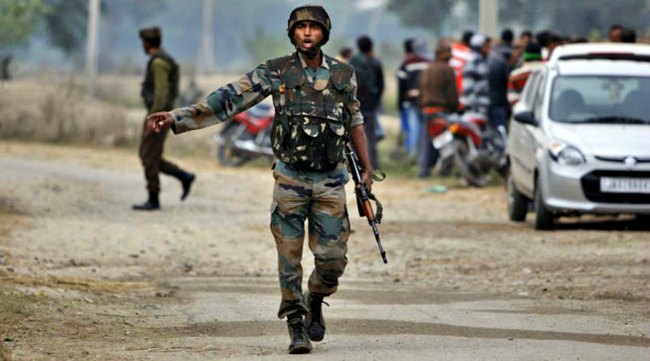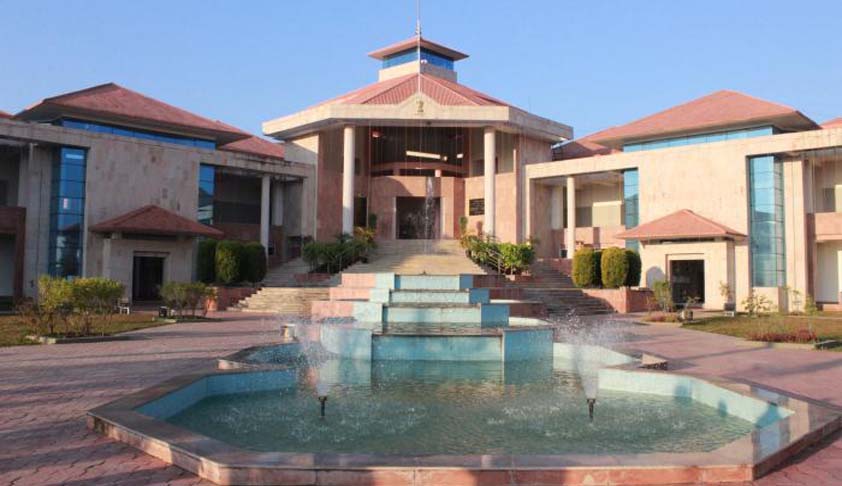Massive Incendiarism Attack in Manipur : Suspicious Militants Set Ablaze 100 Houses Amid Increasing Violence
Rising Unrest: Militant Arsonists Torch 100 Homes in Manipur, Amplifying Violence

According to officials, an estimated number of 100 houses were engulfed in flames in Serou village of Manipur‘s Kakching district on Sunday, believed to be the result of suspected militant activity. Concurrently, reports indicated intense gunfire exchanges between militant factions and security forces in various areas within the district. The gravity of the situation prompted immediate attention and concern from authorities.
During the recent unrest in Manipur, an unfortunate incident occurred where the house of former minister and Congress MLA K Ranjit was deliberately destroyed in Kakching district in Manipur. Authorities have reported that suspected militants were responsible for the act, as they set fire to the residence of the respected Congress leader in Serou during the late hours of Saturday night.
Extensive search operations have been initiated by the authorities in the region subsequent to the assault on the Congress MLA’s residence. Law enforcement officials have stated that in the aftermath of the violent incident, inhabitants of Serou and nearby villages have vacated their homes and sought refuge in Sugnu, Kakching, and various locations within the Thoubal district.
An endeavor for peace was undertaken by a delegation headed by Y Khemchandra, the Minister of Municipal Administration, Housing and Urban Development in Manipur. Their presence in the region since Saturday aimed to facilitate the reestablishment of harmony and stability in the area, assuring the return of normalcy.

The curfew has been partially lifted in several districts of the state, such as Imphal West and Imphal East (Manipur) . Residents in these districts now have a window of 7-12 hours during which they are allowed to move freely. Notably, the districts of Tamenglong, Noney, Senapati, Ukhrul, and Kamjong are exempt from the curfew measures and do not have any restrictions in place at the moment.
According to an officer’s statement, a BSF team deployed in the rural areas of the district was targeted by a group of militants who opened fire. Thankfully, there were no casualties among the personnel, ensuring a safe outcome without any loss of life. However, efforts are underway to confirm whether there were any casualties among the militants involved in the incident.
The authorities are currently investigating the incident involving the assault on the BSF unit, and it is believed that the attackers employed firearms that were unlawfully acquired from the armories.

According to officials, security agencies have successfully retrieved a total of 23 firearms within the past 24 hours, contributing to a significant increase in the overall count of surrendered weapons since Thursday. This recent development brings the total number of arms relinquished to 202, highlighting the diligent efforts made by the authorities in ensuring public safety and disarmament.
Ethnic tensions have gripped the state, resulting in outbreaks of violonce starting from May 3.
The clashes predominantly involve the Meitei community, representing the majority of the state’s population residing primarily in Imphal,Manipur and the Kukis, who make up 16% of the state’s population and primarily inhabit the hill districts.
The ongoing disagreement revolves around the Meitei people’s longstanding request for a Scheduled Tribe status under the Indian Constitution, which would grant them similar privileges to tribal communities.

Following an April ruling by the Manipur High Court, the state government was directed to reach a decision on the matter within four weeks. However, this demand by the Meitei community was met with opposition from the tribal communities. On 3 May, the All Tribal Student Union of Manipur (ATSUM) organized a unity march across all hill districts. Regrettably, the situation escalated, resulting in conflicts between the Meitei and Kuki communities within and near the Churachandpur district, which is adjacent to the Imphal Valley.
Amidst the turmoil, the residential areas and places of worship belonging to the predominantly Kuki Tribal community were subjected to attacks in non-tribal regions. Law enforcement authorities reported that numerous homes belonging to the tribal population in Imphal were targeted, resulting in the displacement of approximately 500 individuals who sought refuge in Lamphelpat.
Additionally, about 1000 individuals from the Meitei community, who were also affected by the violence, were compelled to flee the area and find sanctuary in Bishnupur. The city of Kangpokpi witnessed the burning of twenty houses. Instances of violence were documented in Churachandpur, Kakching, Canchipur, Soibam Leikai, Tengnoupal, Langol, Kangpokpi, and Moreh, with the Imphal Valley experiencing a higher concentration of these incidents.
These acts of aggression resulted in the destruction and burning of various residences, places of worship, and other properties.

On 4 May, a surge in incidents of unrest came to light. In response, the police were compelled to utilize tear gas shells on multiple occasions to restore order amidst the rioters. Tragically, Vunzjagin Valte, an esteemed member of the legislative assembly for the tribal headquarters of Churachandpur and affiliated with the BJP, became a target of an assault during the upheaval while returning from the state secretariat.
As of 5 May, his condition was reported to be in a critical state. According to official reports, the violence resulted in the destruction of approximately 1,700 residential properties and an extensive number of vehicles.
On 4 May, the Manipur government implemented a strict shoot-at-sight directive. Prior to this, on 3 May, a total of 55 battalions from the Assam Rifles and the Indian Army were swiftly deployed to the area. As a precautionary measure, over 9,000 individuals were successfully relocated to secure and protected areas by 4 May.
In response to the escalating security situation in Manipur, the central government promptly dispatched five companies of the Rapid Action Force to the area. Additionally, a significant deployment of approximately 10,000 army, para-military, and Central Armed Police Forces was undertaken in Manipur.
Recognizing the gravity of the circumstances, on 4 May, the Union government invoked Article 355, a constitutional provision pertaining to security, thus assuming direct control over the security affairs of Manipur.
The situation on 16 May witnessed the continuation of an internet blackout and curfew, resulting in limited access to information. This led to reports of scarce food supplies, closed shops, schools, and offices, leaving thousands of individuals stranded in refugee camps.
Tragically, the outbreak of fresh violence over the weekend led to additional displacements. On 17 May, the authorities decided to extend the internet blackout for an additional five days. Simultaneously, the vigilant efforts of the army prevented further violence by successfully recovering explosives and a Remote Initiation Mechanism for IEDs in Village Bungbal Khullen. However, on 29 May, another wave of violence erupted, resulting in the unfortunate loss of lives, including the death of one policeman.
On the 28th of May, a intense exchange of gunfire took place involving members of the surrendered Valley-based Insurgent Groups (VBIGs).
Proofread & Published By Naveenika Chauhan




